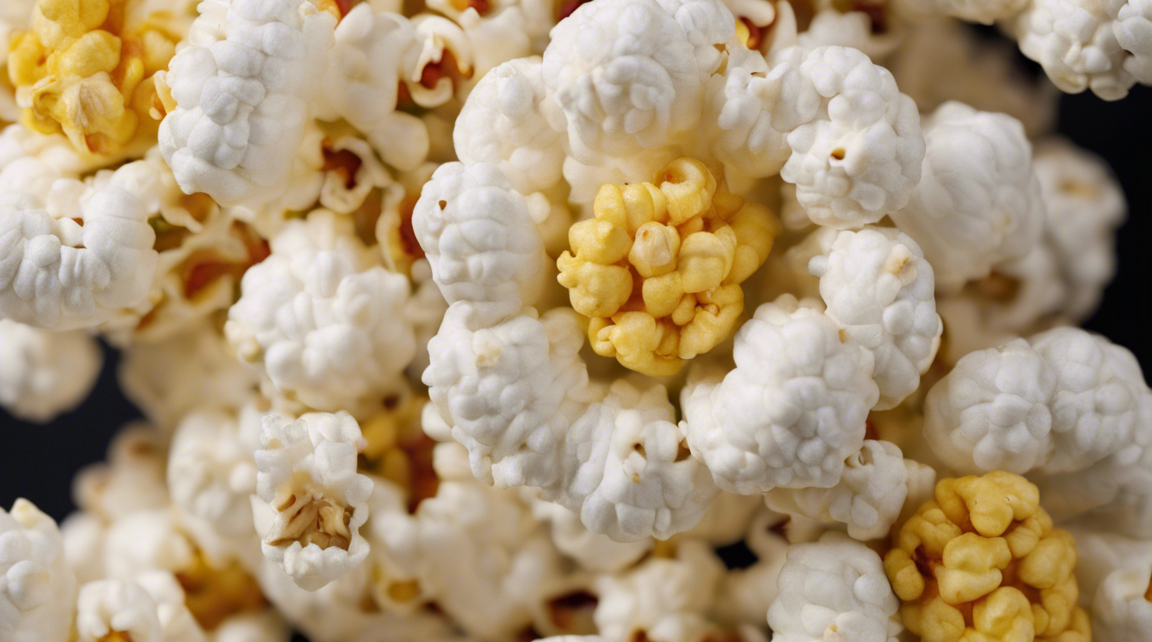In the world of flowers, there is an often-overlooked beauty that deserves more recognition – the popcorn flower. This delicate and unique flower, also known by its scientific name Plagiobothrys, captivates with its appearance and intriguing characteristics. Despite its unassuming name, the popcorn flower has a charm all its own that makes it a standout in any garden or natural setting.
Origins and Characteristics of the Popcorn Flower
The popcorn flower belongs to the Boraginaceae family and is native to North America. It can be found in various habitats, from meadows to mountains, showcasing its adaptability and resilience. The name “popcorn flower” stems from the clusters of small, white, fluffy flowers that resemble popped corn kernels, giving the plant a whimsical and endearing quality.
This annual or perennial herbaceous plant typically grows to a height of 8 to 24 inches, with slender stems and hairy leaves. Its flowers bloom from spring to early summer, attracting pollinators such as bees and butterflies with their nectar and pollen. The popcorn flower comes in different species, each with its unique features and nuances, but all sharing a common grace and allure.
Cultivation and Care Tips for Popcorn Flowers
Growing popcorn flowers can be a rewarding experience for both novice and seasoned gardeners. Here are some essential tips for cultivating and caring for these beautiful plants:
1. Sunlight and Soil:
- Popcorn flowers thrive in full sun to partial shade, so make sure to plant them in a location that receives adequate sunlight.
- The soil should be well-drained and fertile, with a slightly acidic to neutral pH level.
2. Watering:
- Water young popcorn plants regularly to help establish their root system.
- Once established, popcorn flowers are drought-tolerant and generally do not require frequent watering.
3. Fertilization:
- Use a balanced fertilizer once a month during the growing season to encourage healthy growth and vibrant blooms.
4. Pruning:
- Deadhead spent flowers to promote continuous blooming and prevent the plant from self-seeding excessively.
5. Pest and Disease Control:
- Keep an eye out for common pests like aphids and spider mites, and treat them promptly to protect your popcorn flowers.
- Proper air circulation and avoiding overhead watering can help prevent fungal diseases.
The Symbolism and Significance of Popcorn Flowers
Like many other flowers, popcorn flowers carry symbolic meaning and significance in various cultures and contexts. Here are some interpretations associated with these charming blooms:
1. Innocence and Purity:
- The delicate white flowers of popcorn flowers symbolize innocence, purity, and simplicity, making them a popular choice for weddings and baby showers.
2. Resilience and Adaptability:
- Thriving in diverse environments, popcorn flowers represent resilience, adaptability, and the ability to overcome challenges.
3. Renewal and Growth:
- The blooming of popcorn flowers in spring signifies renewal, growth, and the cyclical nature of life and seasons.
Frequently Asked Questions (FAQs) About Popcorn Flowers
1. Are popcorn flowers easy to grow for beginners?
- Yes, popcorn flowers are relatively easy to grow, making them suitable for beginners looking to enhance their garden with unique blooms.
2. Do popcorn flowers have a pleasant fragrance?
- While popcorn flowers are not known for their fragrance, they make up for it with their charming appearance and whimsical appeal.
3. Can popcorn flowers attract pollinators to my garden?
- Yes, popcorn flowers are excellent at attracting pollinators like bees and butterflies, contributing to the overall biodiversity of your garden.
4. Are there different colors of popcorn flowers besides white?
- While white is the most common color for popcorn flowers, some species may also feature shades of pink or purple, adding variety to your garden palette.
5. Do popcorn flowers self-seed easily?
- Yes, popcorn flowers are known to self-seed, so it’s important to deadhead them regularly if you want to control their spread in your garden.
In Conclusion
In conclusion, the popcorn flower is a unique and charming addition to any floral collection or garden landscape. With its whimsical appearance, adaptability, and symbolic significance, this unassuming plant offers a world of beauty and wonder to explore. By understanding its characteristics, cultivation requirements, and symbolism, you can fully appreciate the allure of the popcorn flower and the joy it can bring to your outdoor spaces.



